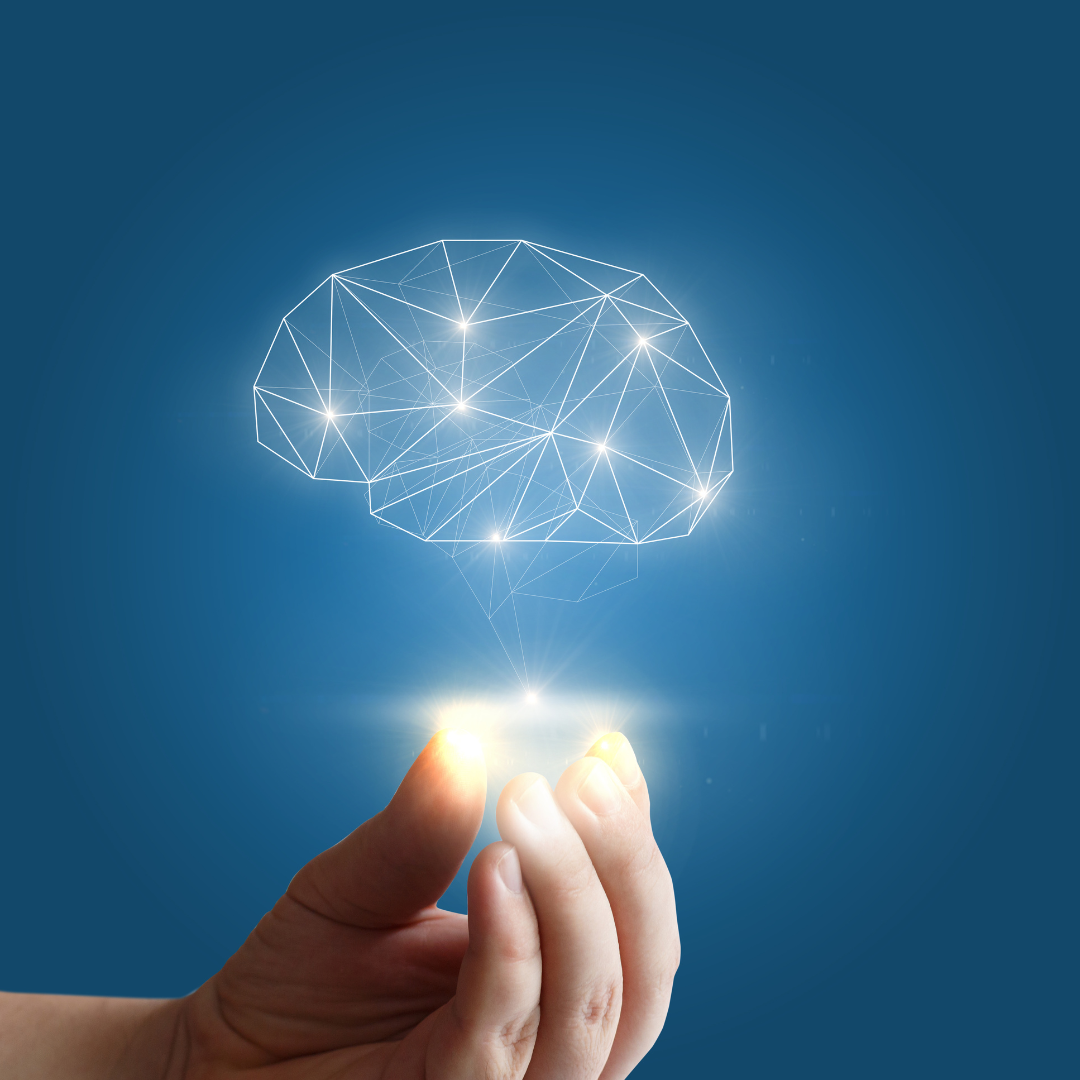“If you are feeling depressed, go for a run and you will realise your physical health is worse than your mental health” – A trending funny meme. While it will give you a laugh of resonance, this meme does highlight a deeper connotation of mind and body connection.
The mind-body connection garners varied perspectives. While some dismiss it as a myth, for many, it embodies the essence of holistic well-being. Spiritual practices, such as martial arts or meditation, deepen this connection, enhancing our awareness of bodily responses. Despite numerous studies highlighting the benefits of mind-body exercises, the underlying mechanisms remain elusive. Nonetheless, it’s evident that improved physical and mental health catalyses behavioural and structural changes within us.
Table of Contents
Exploring the Mind-Body Connection
There are many different viewpoints regarding the mind-body connection. Some believe that our wellbeing is influenced by both the body and the mind; for others, it is simply the mind that controls the body. However, beyond the mind, a realm of cognition exists, where consciousness intertwines with both body and spirit. Most people who practise martial arts or meditation or other similar disciplines have a greater mind-body connection than others. Fasting practitioners, for instance, demonstrate a keen awareness of body reactions, adjusting their routines accordingly.Numerous investigations have also documented the encouraging effects of mind-body workouts on an individual’s health. Nevertheless, little is known about the mechanisms behind these effects. A person’s behaviour changes due to improved physical functions, which is frequently accompanied by structural alterations in the brain.
Some people believe that by using their mind as a catalyst, anyone can strengthen their bond with their body. Mindfulness, affirmations, visualisation exercises, goal setting, atomic habits, therapy, body work and so on are known to improve physical health. It is actively used by athletes before the game or businessmen before the deal.
The other way around works as well. Improving your physical health improves mood, mind and more. Regular exercise, for instance, releases endorphins, neurotransmitters known to alleviate stress and boost mood. Engaging in physical activity also promotes better sleep, which in turn enhances cognitive function and emotional resilience. Studies have shown that by nurturing our bodies, we lay a solid foundation for mental wellness, fostering a positive cycle of health and happiness.However, the enlightened mind and body will not fully respond without some form of faith as a pivot point to the brain-body relationship.
Myths about the mind-body connection
Everything is controlled by the mind
Contrary to this myth, the mind is entirely in control of all the physiological processes and actions. Although the mind is responsible for controlling many bodily functions, it is not the only component that impacts what occurs in the body. Physiological factors, genetics, environment and connections between the body’s various systems all play a role in the bodily process. For example, Influencers in the fitness field often underline how essential one’s mindset is to reach fitness objectives. Positive thinking and mental fortitude can improve motivation and performance, but they also understand the role of heredity, diet, and physical training in the outcome. An influencer in the fitness industry, for instance, might support proper recovery methods and balanced workout schedules in addition to recognizing the advantages of positive thinking
Brain and mind are the same thing
This myth raises awareness about the common misperception regarding the connection between the mind and the brain. The mind is a concept used to describe the subjective experiences, ideas, emotions, and consciousness that result from the brain activity, whereas the brain is the physical organ that is in charge of processing information and regulating physiological activities. The mind includes complex cognitive functions and psychological events in addition to the physical elements of the brain, despite their close connection. For instance, a prominent athletic psychologist specialising in sportsmen training may emphasise the difference between the brain’s biological functions and the psychological aspects of performance. They might describe how mental training, such as visualisation, goal-setting, and mindfulness, can be used in combination with physical training to improve athletic performance. This viewpoint emphasises the necessity of mental skills training together with physical conditioning for top athletic performance.
Memory functions like a video recorder
This myth holds that memories are stored in the brain linearly and objectively, similar to a video recording that can be replayed with perfect preciseness. In fact, memory is a complicated and dynamic process that is influenced by a variety of factors, including perception, attention, emotion, and cognitive biases. Memories can be restored, deformed, or forgotten over time, resulting in misleading or invalid recollections.For example, a fitness coach or personal trainer might highlight the importance of memory in skill acquisition and motor learning. They could explain how memory integrates during sleep and how practice, feedback, and repetition are necessary for skill development. Recognizing the limitations of memory and the significance of purposeful practice, they help clients in setting realistic goals and developing effective long-term training plans.
Brain cannot heal injuries
It is a misconception to believe that brain injuries, such as strokes, are unsolvable because of neuroplasticity. Neuroplasticity is essential to the brain’s ability to heal and compensate for stroke-induced damage. Following a stroke, the brain can reorganise itself, determining new connections between neurons and pathways to restore function or adapt to changes. When a stroke causes damage to a section of the brain, adjacent parts can often take over the injured area’s tasks due to neuroplasticity. This can result in partial or even complete recovery of lost function area’s tasks due to neuroplasticity. This can result in partial or even complete recovery of lost function.
A case in reference
Michael Bernstein, M.D., an eye surgeon and tennis enthusiast, suffered a stroke at the age of 54. He was married with four children. After recovering from a novel neuroplastic therapy, he returned to work at his Birmingham, Alabama clinic. On the morning of his stroke, Dr. Bernstein had performed cataract, glaucoma, and refractive surgeries on seven patients, all of which were delicate eye procedures. When Dr. Bernstein rewarded himself by playing tennis, his opponent commented that his balance was off and he wasn’t playing his typical game. He drove to the bank after tennis and was unable to elevate his leg to exit his low-slung sports automobile. When he returned to his workplace, his secretary informed him that he didn’t seem right. Bernstein’s family physician, Dr. Lewis, who worked in the building, was aware of his minor diabetes, cholesterol issues, and mother’s history of strokes, making him a potential candidate for an early stroke. Dr. Lewis administered heparin to prevent blood clotting, and Bernstein’s wife transported him to the hospital. The stroke progressed over 12-14 hours, resulting in total paralysis on the left side of the body, indicating damage to a major portion of the motor cortex.
Dr. Bernstein was among the first to experience Edward Taub’s constraint-induced (CI) movement therapy at the Taub Therapy Clinic, during the program’s research phase. He thought he had nothing to lose. His progress with CI therapy was really swift. He described it as “unrelenting.” They begin at eight a.m. and continue until four p.m., when they end. It even went on during lunchtime. He is now back at work, managing his busy office. He also plays tennis three days a week. He is still having difficulty running and is working to strengthen a weakness in his left leg that was not fully addressed at the Taub clinic, which now offers a particular programme for paralysed individuals.
Principles of Mind-Body Connection
The relationship between the mind and body are governed by specific principles.
- Mind intelligence and body intelligence are different. The mind is a function of conscious awareness, whereas, the body is guided by subconscious awareness. This is evident in our voluntary actions such as limb movement as compared to the breathing or reflexes controlled by the spine.
- Body awareness is closest to our authentic self. Body never lies, the mind can. This is to say that our gut feelings are true for us whereas our mind can take us on a joy ride of overthinking, logic, rationale which may not lead to the best decisions for us.
- Our mind intelligence is based on our limited knowledge and experiences, whereas our bodies can tap into a much wider spectrum of information from the environment.
- A balance between mind and body awareness is essential for creating a healthy and harmonious life.
Fundamentally, the principle of the mind-body connection implies that all of our health-related issues are a symptom of a deep-rooted complex set of emotions, thoughts, and feelings. This point of view integrates the promotion of health from the inside out, encompassing the mind, body, and even the spirit. Healthcare professionals that believe in the mind-body connection typically approach treatment in a preventive manner.
One of the ways of understanding this would be to examine Yin and Yang, which states that all activity and growth are balanced by rest and inactivity. To visualise this, consider the equilibrium between day and night or the way that everything in nature grows and extends from the Winter to the Summer solstices. Therefore, this requirement for balance between action and rest and replenishment also governs us internally. As a part of nature, our body’s organs are calibrated to keep us in tune with the phases of activity and rest. Attempting to disrupt this natural cycle puts stress on our organs. The popular advice to “take a deep breath” while feeling angry or worried is an awareness of the relationship between the body and mind. And it goes without saying that we are utilising this idea, namely in our asana practice. Yoga practitioners have found that while forward bends and inversions encourage a calmer, more contemplative mood, backbends and side stretches tend to be more mentally engaging.
Techniques of Mind-Body Connection
The goal of mind-body techniques is to restore prefrontal cortex activity, decrease amygdala activity, and restore normal activity of the HPA axis and locus coeruleus-sympathetic nervous system, as well as to regulate the stress response system. Here are some of these techniques:
Mindfulness benefits the treatments for mental health issues, ailments linked to stress, cancer, and cardiovascular diseases. For those who are having difficulties, mindfulness is essential since it helps focus attention on the here and now.
Traditional meditation’s major focus is on the inhalation and exhalation of air through the nose. Studies on the breath attest that breathing naturally slows down when we are aware of and attentive to our breathing. This promotes physical relaxation, which lessens feelings of anxiety, depression, and rage.
Progressive Muscle Relaxation (PMR) enhances body intelligence. With PMR, we may work on one muscle area at a time and learn how to systematically contract and then release our muscles. By focusing more on the body, this technique lowers physical stress and tension.
Another technique is Biofeedback which is a cutting-edge method for increasing body intelligence. This is the use of electrodes to create body awareness through scientific and physiological body monitoring. Electromyography, or EMG, allows people to alter their body’s state.
Yoga, T’ai Chi and Qigong which uses body movements to highlight the present-day internal experience. The motions’ gradual tempo aids in our relaxation and bodily tension reduction. Additionally, they foster concentration, which lessens bad feelings.
Inner Child Therapy is a holistic therapeutic approach which dives deeper into the root cause of a particular illness, disease or health related issue stored in the subconscious mind. By exploring the origin of the thought/belief/judgement that manifests in the physical body, a massive amount of healing can be achieved, if not eliminated. It also allows a stronger mind-body connection.
The mind-body connection serves as a gateway to holistic well-being, intertwining our physical, mental, and spiritual realms. By nurturing this connection, we embark on a journey of self-discovery and healing, enriching our lives with love, balance, and harmony.
–
Suvanjali Lama is a Research Associate at Treta Foundation and a clinical psychologist.





I absolutely loved this deep dive into The Mind-Body Connection! It’s amazing how our thoughts, emotions, and physical health are so deeply intertwined. The part about mindfulness and movement really resonated with me—sometimes, just being present with our bodies can bring so much healing.
This was such a powerful read on The Mind-Body Connection! It’s fascinating how our thoughts and emotions can directly influence our physical well-being. I especially loved the part about integrating mindfulness and movement—it’s a reminder that healing isn’t just about one aspect of ourselves, but a holistic process.
Reading this made me reflect on my own journey with the mind-body connection. It’s incredible how small shifts—like improving posture, mindful breathing, or even eating with awareness—can transform not just physical health but emotional well-being too. This is something I wish more people understood!
The mind-body connection is something I’ve been learning to nurture, and this post makes it so clear why it’s essential! Stress and negative emotions used to take a serious toll on my physical health, but ever since I started practicing meditation and conscious movement, I feel lighter—both mentally and physically. It’s amazing how much healing begins from within.
This post beautifully highlights the importance of the mind-body connection! I’ve always believed that our thoughts and emotions directly impact our physical health, but seeing it explained this way really reinforces that belief. Mindfulness and deep breathing exercises have helped me feel more in tune with my body’s signals.
This article beautifully illustrates the profound impact of the mind-body connection on our overall well-being. It’s fascinating to see how practices like meditation and mindfulness can harmonize our mental and physical health. I’ve personally experienced the benefits of integrating such practices into my daily routine, leading to improved mood and clarity.
This article really resonated with me! I’ve always believed in the power of the mind-body connection, but I never fully understood how deeply our thoughts and emotions impact physical health until now. The way you explained mindfulness and its role in healing was so insightful. I’m definitely going to try incorporating some of these techniques into my daily routine. Thank you for sharing this!
Reading about the mind-body connection in this article was a revelation. The integration of scientific insights with practical examples made it relatable. It’s motivating me to pay more attention to both my mental and physical health.
The mind-body connection is often overlooked, but this post brings it to the forefront. I appreciated the emphasis on practices like mindfulness and visualization. Incorporating these into daily life can make a significant difference in overall well-being.
I’ve always believed in the power of the mind-body connection, and this blog reinforced that belief. The myths debunked here, especially about memory and healing, provided a fresh perspective. Thank you for shedding light on these misconceptions.
This article beautifully captures the essence of the mind-body connection. The distinction between the brain and the mind was enlightening, and the case study of Dr. Bernstein’s recovery was truly inspiring. It’s a reminder of how interconnected our mental and physical health truly are.
The Mind-Body Connection is so real — this blog helped me understand how stress and emotions directly impact my body
Great insights on the Mind-Body Connection! I’m going to start practicing more mindfulness to balance my energy
A wonderful reminder about the Mind-Body Connection and how important it is to take care of both mental and physical health together.
The Mind-Body Connection is something I’ve been curious about for a while. Your post gave me new ways to improve my well-being.
Finally found a simple and clear article about the Mind-Body Connection. It makes total sense how our thoughts influence health.
This post on the Mind-Body Connection was eye-opening. I never realized stress could create so many physical symptoms.
This post about Mind-Body Connection is an eye-opener. I didn’t realize how stress could silently affect physical health.
Thank you for shedding light on the Mind-Body Connection. It’s fascinating how emotional health shapes the body’s responses.
I’ve read many articles but this one on Mind-Body Connection feels truly practical and applicable in real life. Thank you!
Such a thoughtful post on the Mind-Body Connection! It made me realize how deeply emotions impact our physical well-being.
The way you’ve explained the Mind-Body Connection here is simply brilliant. I’m motivated to be more mindful of my thoughts now.
Loved how you simplified the concept of Mind-Body Connection. It’s such an important topic that many ignore in daily life.
This blog on the Mind-Body Connection really opened my eyes to how mental stress affects physical health. Great insights!
I’ve always believed in the power of the Mind-Body Connection, but this article gave such a fresh perspective. Truly enlightening!
Loved this detailed explanation on the Mind-Body Connection. It really made me reflect on how my emotions affect my body!
Thank you for putting this into words. The mind-body connection is something I’ve been exploring lately, and this post gave me practical insights to deepen my self-awareness.
Amazing Article….
I resonated so much with the part about stored emotions showing up as body pain. The mind-body connection is real, and this article breaks it down so gently yet powerfully.
Such a beautifully written post. The mind-body connection plays a huge role in my healing journey, and your examples made it even clearer how emotions and physical health are deeply linked.
This article is a much-needed reminder that the mind-body connection isn’t just a wellness trend—it’s the foundation of true healing. I loved the way you explained how our thoughts physically manifest!
The way you’ve broken down the Mind-Body Connection makes it easy to understand and apply in daily life. Insightful and well-written!
I’ve read a lot about mental health, but this post on the Mind-Body Connection ties it all together so well. Loved the holistic angle!
Thank you for simplifying the concept of the Mind-Body Connection. It’s such a crucial part of healing that many overlook
This blog on the Mind-Body Connection really made me reflect on how emotions affect my physical health. Beautifully explained!